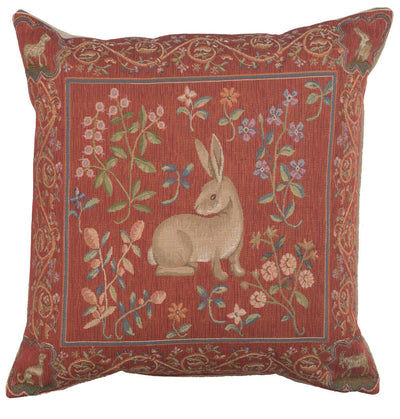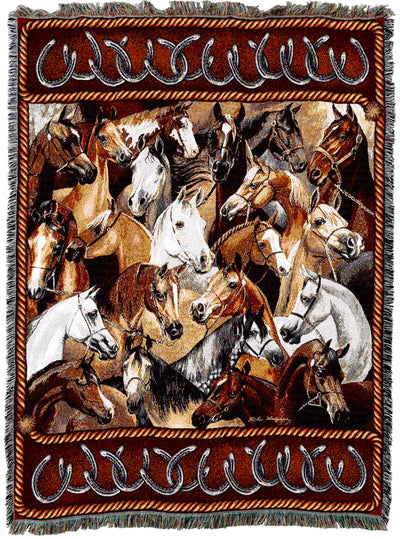What to Look for When Buying Vintage Tapestries: Fabric, Weave, and Wear
There’s something magnetic about a vintage tapestry, the way centuries-old threads still hold color, texture, and stories. But not every “antique” textile hanging in a shop window is what it claims to be. The real art of buying vintage tapestries lies in knowing how to read the fabric, the weave, and the wear. It is the craftsmanship that reveals whether a piece was made by skilled hands or by a modern machine.
Each detail you see, be it the faded natural dye or the wool thread, is a clue to authenticity and age. That is why, as a true collector, you must inspect how it was built, how it aged, and how it survived. In this guide, we’ll break down exactly what to look for, so you can recognize genuine vintage artistry and invest in a textile with both beauty and history woven in every fiber.
Understanding What Makes a Tapestry ‘Vintage’
A tapestry earns the title vintage not simply by age, but by authenticity and craftsmanship. Typically, these pieces are at least a few decades old, created before the dominance of modern, machine-made textiles. What sets them apart is their handwoven construction, use of natural fibers like wool or silk, and vegetable-based dyes that mellow gracefully over time. Vintage wall tapestries often reflect the artistic trends or cultural motifs of their era, pastoral scenes, mythological figures, or heraldic emblems. Recognizing these markers helps buyers distinguish a genuine vintage textile from a reproduction that merely imitates its antique charm.
Check the Fabric: What It’s Made Of Matters
The fabric is one of the most important aspects of any tapestry, and for vintage pieces, it tells you everything about age, quality, and authenticity.
Primary Material :
-
Wool: The most widespread material in European tapestries; valued for its durability, warmth, and ability to absorb natural dyes, producing a wide tonal range.
-
Linen: Common in ancient Egyptian and early medieval European textiles; its crisp texture and strength made it ideal for both warp and weft in lighter wall hangings.
-
Silk: Favored in Chinese, Japanese, and Byzantine works; prized for its sheen and smoothness, allowing fine detail and subtle tonal effects in luxury pieces.
-
Cotton: Frequently used alone in Middle Eastern, Indian, and pre-Columbian Peruvian weavings; soft, easily dyed, and suited for intricate geometric or floral designs.
Material Combinations:
-
Wool was often combined with linen, silk, or cotton to create richer textures and contrast.
-
Silk threads added luminosity and were commonly used in highlights or fine detailing, particularly in 18th-century French Beauvais tapestries.
-
Linen was used for warp threads in medieval Europe and ancient Egypt for its strength.
-
Cotton and wool blends appeared in pre-Columbian Peruvian and Islamic weavings.
Luxury Fibers:
-
In elite commissions, gold and silver threads were interwoven with silk and wool to produce opulent effects.
-
These metallic threads were typically spiraled silver wire wound around a silk core, a technique used in Europe since the 14th century.
Back vs. Front Color Test:
-
In authentic vintage wall tapestry hangings, the back is nearly as rich as the front.
-
Machine-woven copies often have dull or pale reverses.
Look at the Weave: The Art in the Details
The weave reveals whether the tapestry was made by hand or machine.
Handwoven Indicators:
-
Look for slight irregularities in the weave; no two handmade threads align perfectly.
-
Uneven stitching and varied thread tension indicate human craftsmanship.
Machine-Woven Signs:
-
Perfectly uniform weaves, mechanical precision, and repetitive stitch patterns mean it’s a reproduction, often post-1900.
Magnification Check:
-
Use a magnifying glass to inspect warp (vertical) and weft (horizontal) threads.
-
A handwoven tapestry will show tiny differences in spacing and thickness.
Weave Density:
-
Measured in threads per inch (TPI); finer, denser weaves suggest higher quality and possibly prestigious workshops like Aubusson or Gobelins.
Design and Subject Matter:
-
Historical or mythological scenes are typical of 16th–19th century European tapestries.
-
Baroque and Rococo designs often feature elaborate foliage, cherubs, and royal crests.
Workshop Marks or Signatures:
-
Some vintage tapestries, especially from France or Belgium, bear woven initials, insignia, or location marks, valuable clues to origin and authenticity.
Selvage and Edges:
-
Authentic vintage tapestry wall hangings have hand-finished borders.
-
Perfectly machined, uniform edges mean modern manufacturing.
3. Assessing Wear and Condition
A tapestry’s wear pattern is not just about damage; it’s evidence of age, care, and authenticity.
Natural Aging vs. Neglect:
-
Look for consistent, even fading; this indicates natural exposure over decades.
-
Sharp discolorations or stains show poor storage or water damage..
Structural Integrity:
-
Check for tears, holes, or weak spots, especially near edges and hanging loops.
-
Examine the back lining fabric; archival linen or cotton is acceptable, but synthetic backings can trap moisture.
Odor and Mold:
-
A musty or mildew scent can indicate long-term exposure to damp conditions.
-
Avoid tapestries with visible mold or dry rot; restoration can be expensive.
Insect Damage:
-
Tiny holes or powdery residue suggest moth or beetle activity.
-
Older wool pieces are more prone unless properly stored.
Restoration Signs:
-
Look for patches of different thread color or tension; these can reduce historical value.
-
Light, skilled restoration is acceptable if disclosed
How to Care For and Display Your Vintage Tapestry
Vintage decorative wall tapestries are delicate heirlooms that need precise care. Let's see how you can do that: -
Handling & Cleaning
Use clean cotton gloves; skin oils weaken fibers. Avoid washing or dry cleaning; consult a textile conservator. Dust gently with a soft brush or low-suction vacuum through the mesh.
Light & Environment
Keep away from sunlight and heat. Maintain 18–22°C in stable humidity. Avoid damp or vented walls.
Mounting & Display
Use Velcro or a cotton sleeve with a rod, never nails. Rotate the display occasionally, leaving space behind for airflow. Frame small pieces under UV-protective glass.
Storage
Roll your tapestry wall hanging on a wide acid-free tube, design outward, and inspect periodically for moths or dampness.
Wrapping Up
By knowing what to look for, you ensure your investment will be decorative and historical at the same time. Looking for such tapestries in excellent condition? Quality Tapestries offers an exceptional collection of handpicked wall tapestries inspired by both historical and contemporary artistry. We keep our selection fresh with new designs each year and proudly ship worldwide, having served customers in over. We even have custom-made tapestries for you. Explore our collection today and discover a tapestry that will bring timeless beauty and heritage into your home.
















